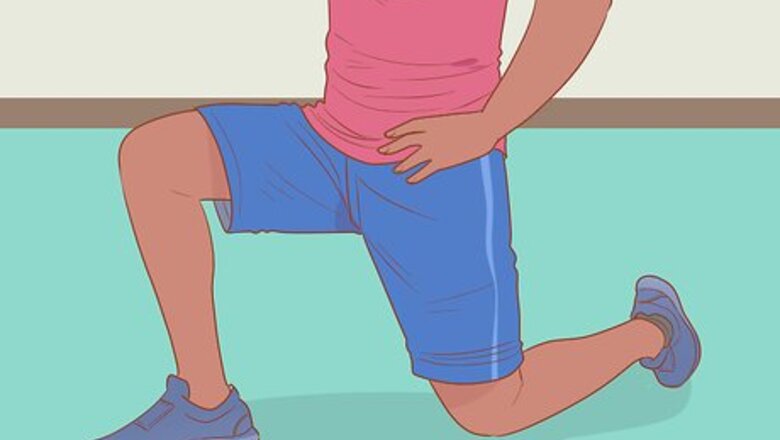
views
Stretching to Relax Your Leg Muscles
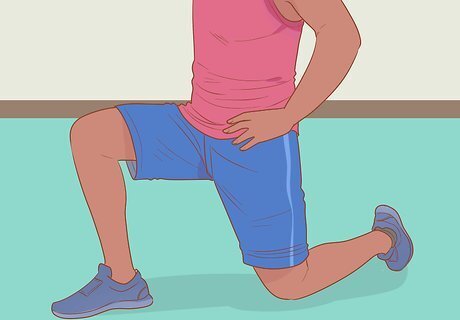
Cool down and stretch your legs after you exercise. Take 5 to 10 minutes after each workout to do 3 to 4 targeted stretches based on what you focused on that day. Making this part of your normal workout routine will help decrease the soreness in your legs and will make recovery that much easier. In addition to helping relax your leg muscles, cooling down properly will also help your heart rate return to normal before you move on to the next part of your day. You don’t have to limit your stretching just to your post-workout routine! Stretch on days when you don’t exercise to help relax your legs, and don’t forget to warm up before working out, too.
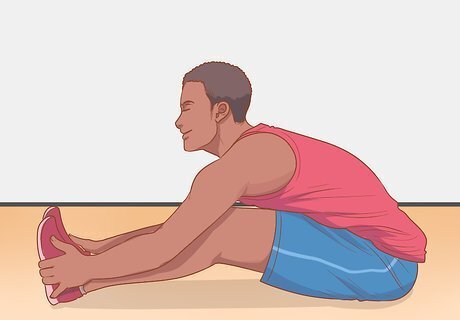
Stretch your hamstrings and calves by doing a seated forward fold. Sit on the ground with your legs stretched out straight in front of you; keep your toes pointed toward the ceiling. Slowly bend forward and stretch your arms toward your toes. Continue bending forward until you feel your hamstrings and calves begin to stretch. If you can, grasp your feet and hold that stretch for 10 seconds. Repeat this movement 5 times. If you can’t reach your toes yet, that is okay! Simply reach as far as you can and hold the stretch for 10 seconds. Over time, you’ll notice that you’re able to stretch further and further. Never stretch to the point of pain. You should feel tension in your muscles as they begin to release, but if you ever feel sharp pain, stop the stretch immediately.
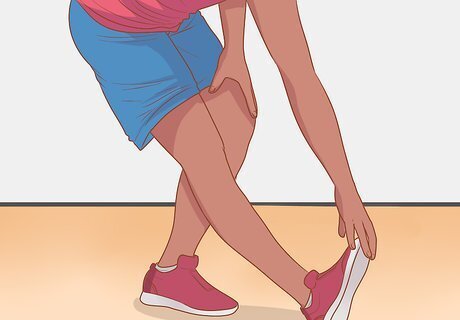
Do the standing hamstring stretch to loosen up your legs. Stand up straight with your legs about hip-width apart. Breathe in deeply, and as you exhale, bend forward at the hips (try to keep your neck and shoulders as relaxed as possible. Bend down as far as you can, wrap your hands around the backs of your calves, and hold the stretch for 15 to 30 seconds. Slowly return to standing, and repeat the stretch 5 times. This move also stretches your gluteals, which is great because they can contribute to leg soreness, too.
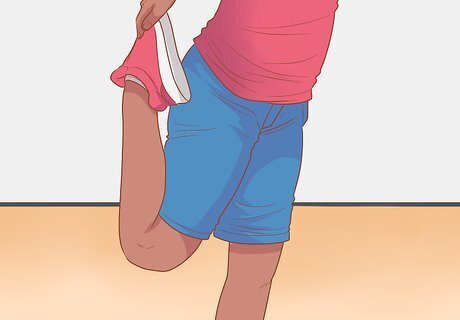
Loosen up your quadriceps by doing standing quad stretches. Stand with your hips and shoulders facing forward and keep your feet together. Lift one foot backward until you can grasp it with your hand. Press your foot toward your gluteals until you feel the muscles stretching, and then hold that stretch for 10 to 15 seconds. Repeat this on each leg a total of 5 times. You can modify this stretch by doing it while laying on your side on the ground.
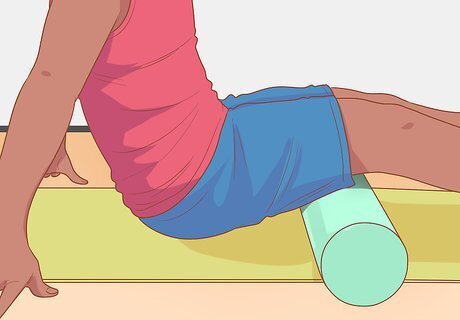
Use a foam roller to stretch your muscles whenever they get sore. Focus on rolling your calves, hamstrings, and quadriceps. In general, place the foam roller underneath the muscles that need to be stretched. Use your arms to move your body back and forth over the foam roller. Try to roll back and forth for 15 to 30 seconds before moving on to another section of your legs. Don’t forget to stretch out your glutes, too. They connect to your leg muscles and can contribute to sore, tight feelings in your legs.
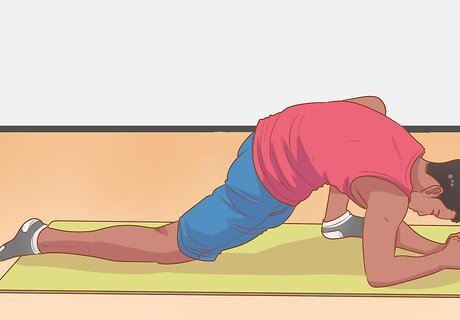
Add some yoga to your weekly routine to stretch and relax your legs. Instead of doing an intense yoga workout, find a class or video that focuses on stretching and relaxation. Do this routine 1 to 2 times a week to give your legs an extra opportunity to stretch. Work on controlling your breathing while you’re doing yoga and really push into the stretches as instructed. If you find that yoga really helps with your tight leg muscles, you could even add an abbreviated 10- to 15-minute session to your daily routine.
Using Heat
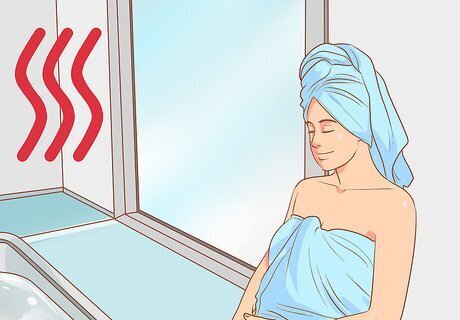
Pop into the sauna after a hard workout to relax your leg muscles. Sit in the sauna for 15 to 20 minutes, though don’t worry about staying in for a shorter amount of time if you want to. Drink a glass of water before getting into the sauna, and continue drinking water once you’re out—the heat can really make you sweat so it’s important to rehydrate. Avoid using a sauna if you are pregnant, sick, or dehydrated. EXPERT TIP Laila Ajani Laila Ajani Fitness Trainer Laila Ajani is a Fitness Trainer and founder of Push Personal Fitness, a personal training organization based in the San Francisco Bay Area. With over 10 years as a trainer and exercise specialist, Laila has expertise in competitive athletics (gymnastics, powerlifting, and tennis), personal training, distance running, and Olympic lifting. Laila is certified by the National Strength & Conditioning Association (NSCA), USA Powerlifting (USAPL), and she is a Corrective Exercise Specialist (CES). Laila Ajani Laila Ajani Fitness Trainer A sauna session after a workout can relax muscles and increase circulation. Saunas can reduce swelling and relieve pain. Stay hydrated, though, as saunas are hot. This is especially important if you had a strenuous workout before using the sauna, as you may be dehydrated.

Apply a hot water bottle to let moist heat penetrate sore muscles. Heat up the water until it gets to 90 to 100 °F (32 to 38 °C), but try to avoid using water that’s hotter than that. Carefully fill the water bottle about 2/3 of the way, and then replace the seal so it can’t spill out. Put the hot water bottle on your sore muscles for 20 to 30 minutes. Your hot water bottle should hold heat for about an hour; if you still need it after that time, heat up more water and replace what is already in the bottle.

Use a heating pad as an easy way to apply dry heat to sore muscles. Turn on the heating pad and apply it to the sore or tight area on your leg(s). Never put it against your bare skin, as this could burn you. Leave it on the area for 15 to 20 minutes before you move it to another spot. If the pad feels like it is burning you, turn down the heat or add another layer of fabric between your skin and the pad. While moist heat is often said to be the most beneficial, your muscles will still respond well to dry heat, and sometimes that’s all you have available to you.Warning: Never apply heat to an injury, like a torn or strained muscle. Heat can be used for tight, sore legs, but it can make actual injuries worse.
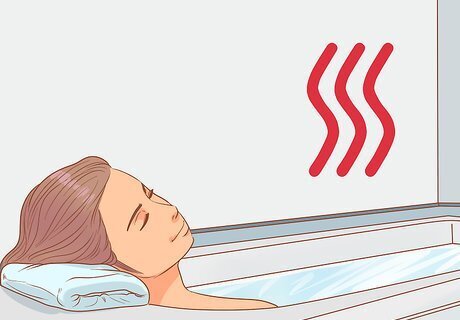
Enjoy a soak in a hot bath or hot tub for some total-body relaxation. Spend 15 to 30 minutes in the bath or hot tub to get the maximum relaxation benefits without risking the chance of getting overly dehydrated. If you notice your fingers have started to wrinkle, that’s a good sign that it’s time to get out. If there are jets available, position them so they are massaging your sore leg muscles.
Taking Care of Your Body

Stay hydrated to increase the blood flow to your muscles. When you’re dehydrated, it’s harder for blood to get to your muscles, which can cause cramping and excessive tightness and soreness. Remedy this problem and help your muscles relax by drinking 8 to 10 glasses of water every day. If you had an especially grueling workout or spent a lot of time in the sun, drink an additional 2 to 3 glasses. If you have been sweating a ton, you may also want to replenish your electrolytes with special drinks or supplements.
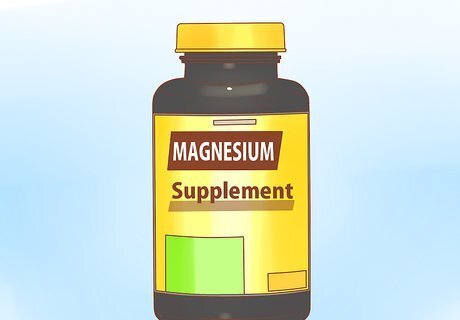
Add a magnesium supplement to your diet to help with muscle function. For adults, the recommended amount of daily magnesium is 310 to 420 milligrams. Look for a soluble supplement (meaning that it can dissolve in liquid), and don’t take more than recommended daily amount.Did You Know: Spinach, almonds, nuts, squash, and fish are great to add to your diet because they naturally contain a lot of magnesium. Always talk to your doctor before adding supplements to your diet. They may have specific recommendations for you based on your sex and age.
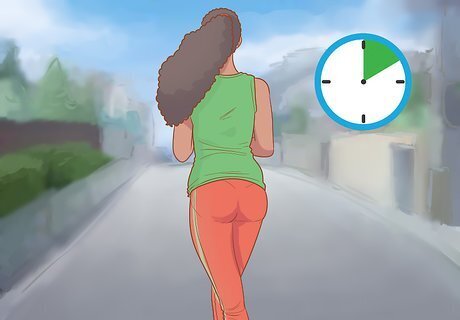
Warm up for 5 to 10 minutes before you exercise. Do a little bit of light cardio activity to get your heart rate up and start pumping blood through your leg muscles. This will help prevent extra strain or injury that could occur if you jumped right into a hard workout without warming up first. Bike, walk, do jumping jacks, or use an elliptical before moving on to the rest of your workout. If you’re still sore or have tight muscles from a previous workout, make sure to not skip your warm-up session.
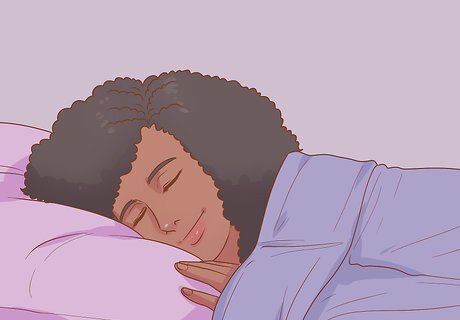
Take an active rest day between workouts to let your muscles recover. Aim to have an active rest day 1 to 2 days per week. Keep in mind that just because you’re resting your muscles doesn’t mean that you can’t still move your body—just do it at a lesser intensity than you normally would. Take a long walk, bike slowly, and avoid using weights or doing repetitive leg exercises, like squats or lunges. If you don’t rest from time to time, your muscles won’t be able to repair themselves and increase in strength. This could eventually cause injury and knock you out of the exercise realm for even longer while you heal.
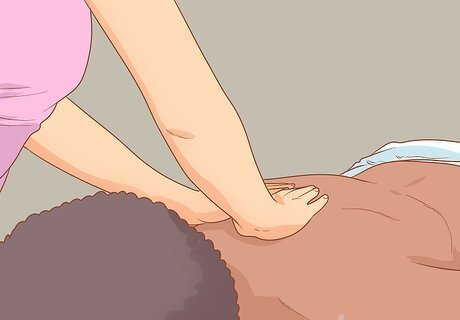
Schedule a visit with a massage therapist for some targeted relaxation. If you’re really working your leg muscles a lot during daily training sessions, you may want to visit a massage therapist on a weekly basis if you can fit it into your routine. Otherwise, getting a massage once a month should be enough to give your leg muscles a little extra TLC. Tell the massage therapist that you would like them to focus on your tight leg muscles, and try to enjoy yourself! Remember to get in some extra hydration after your massage. Toxins get released during your massage, and extra water will help your kidneys flush those toxins out of your body.


















Comments
0 comment